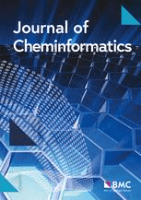
Journal of Cheminformatics
Scope & Guideline
Pioneering the integration of chemistry and technology.
Introduction
Aims and Scopes
- Computational Drug Discovery:
The journal prioritizes research that utilizes computational techniques to facilitate drug discovery processes, including molecular docking, virtual screening, and predictive modeling of drug-target interactions. - Machine Learning in Cheminformatics:
A significant focus on the application of machine learning algorithms to predict chemical properties, optimize molecular designs, and analyze complex chemical data sets. - Molecular Modeling and Simulation:
Research that involves modeling molecular structures, properties, and behaviors through simulations, including molecular dynamics and quantum chemical calculations. - Data-Driven Chemical Research:
The integration of large chemical databases and data mining techniques to extract meaningful insights and facilitate knowledge discovery in cheminformatics. - Interdisciplinary Applications:
Exploring the application of cheminformatics in various fields such as materials science, environmental chemistry, and biomedical research, bridging gaps between different scientific disciplines.
Trending and Emerging
- Graph Neural Networks:
An increasing number of studies are utilizing graph neural networks for molecular representation and property prediction, showcasing the shift towards more sophisticated neural architectures in cheminformatics. - Generative Models for Drug Design:
The rise of generative models, particularly in the context of de novo drug design, is evident, indicating a trend towards using AI to create novel compounds with desired biological activities. - Explainable AI in Cheminformatics:
There is a growing emphasis on explainability in machine learning models, with researchers focusing on methods that provide interpretable insights into model predictions and decision-making processes. - Integration of Quantum Chemistry and Machine Learning:
The convergence of quantum chemistry with machine learning techniques is gaining traction, enabling more accurate predictions of chemical properties and behaviors. - Automated Workflows and Tool Development:
The development of automated cheminformatics workflows and tools is trending, facilitating reproducibility and efficiency in chemical data analysis and molecular modeling.
Declining or Waning
- Traditional QSAR Models:
The focus on conventional Quantitative Structure-Activity Relationship (QSAR) models is decreasing as researchers move towards more advanced machine learning techniques that offer better predictive capabilities. - Rule-Based Approaches:
The use of rule-based cheminformatics methods is waning in favor of data-driven methodologies, as they often lack the flexibility and adaptability required for complex chemical systems. - Basic Chemical Data Analysis:
There is less emphasis on basic descriptive statistical analyses of chemical data as the field progresses towards more complex modeling and predictive analytics. - Single-Method Approaches:
Research that relies solely on a single computational method is declining, with a growing trend towards hybrid approaches that combine multiple methodologies for improved accuracy and robustness.
Similar Journals
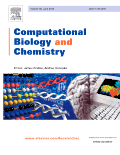
COMPUTATIONAL BIOLOGY AND CHEMISTRY
Unraveling Complex Biological Mysteries with Computational PrecisionCOMPUTATIONAL BIOLOGY AND CHEMISTRY is a distinguished academic journal published by Elsevier Science Ltd, focusing on the dynamic intersection of computational biology, biochemistry, and chemistry. With an ISSN of 1476-9271 and an E-ISSN of 1476-928X, this journal is committed to disseminating high-quality research that employs computational techniques to solve complex biological and chemical problems. As of 2023, the journal holds a substantial impact factor reflecting its significance and rigorous peer-review process, categorized in the Q2 quartile for both Computational Mathematics and Organic Chemistry, alongside Q3 classifications in Biochemistry and Structural Biology. With a continuous publication history spanning from 2003 to 2024, it serves as a critical resource for researchers, professionals, and students alike. The journal offers various open access options, ensuring that vital research findings are accessible to a global audience, further enhancing collaboration across disciplines. Engage with cutting-edge studies and contribute to the evolving landscape of computational methodologies in the life sciences through this esteemed publication.
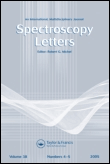
SPECTROSCOPY LETTERS
Catalyzing Discoveries in Atomic and Molecular PhysicsSPECTROSCOPY LETTERS, published by Taylor & Francis Inc, is a pivotal journal that plays a significant role in the fields of Analytical Chemistry, Atomic and Molecular Physics, and Optics. With an ISSN of 0038-7010 and E-ISSN of 1532-2289, it provides a platform for the dissemination of cutting-edge research and developments in spectroscopy and its wide-ranging applications. As of 2023, the journal is ranked in the third quartile (Q3) across its relevant categories, reflecting its importance in these scientific domains. The journal has a continuous publication history from 1968 to 2024, establishing a rich legacy in academic literature. Although it currently does not offer Open Access options, SPECTROSCOPY LETTERS remains a valuable resource for researchers, professionals, and students seeking to advance their knowledge and applications in spectroscopy. For those in the arena of physics and chemistry, this journal is essential for keeping abreast of the latest findings and methodologies in the field.
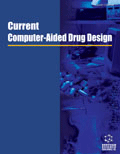
Current Computer-Aided Drug Design
Advancing Drug Discovery Through Computational InnovationCurrent Computer-Aided Drug Design, published by BENTHAM SCIENCE PUBL LTD, is a pivotal journal dedicated to the integration of computer-aided methodologies within the drug design process. With its ISSN 1573-4099 and E-ISSN 1875-6697, this journal serves as a vital resource for researchers, professionals, and students interested in advancing the fields of pharmacology and molecular medicine. Operating under a framework that spans from 2006 to 2024, it aims to foster innovative approaches and discussions surrounding drug design strategies, computational techniques, and the therapeutic potential of novel compounds. Although it currently holds a Q4 rating in Drug Discovery and Molecular Medicine as well as a Q3 in Medicine (miscellaneous) within the 2023 category quartiles, the journal continues to enhance its visibility and relevance in the academic community. Its Scopus rankings reflect its commitment to quality research, positioning it in the context of drug discovery and molecular studies. As the field of drug design evolves, Current Computer-Aided Drug Design remains an essential platform for disseminating cutting-edge findings and facilitating collaboration among specialists aiming for significant advancements in drug development.

PHYSICAL CHEMISTRY CHEMICAL PHYSICS
Bridging Disciplines for a Deeper Understanding of Chemical PhenomenaPhysical Chemistry Chemical Physics is a premier interdisciplinary journal published by the Royal Society of Chemistry, dedicated to advancing the fields of physical chemistry and chemical physics. With an impressive impact factor and categorized in the Q2 quartiles for both Physical and Theoretical Chemistry and Physics and Astronomy, this journal serves as a vital platform for the dissemination of high-quality research findings from 1999 through 2024. Based in the United Kingdom, the journal is committed to providing open access to its articles, enhancing the visibility and accessibility of research to a global audience. Researchers, professionals, and students alike are encouraged to contribute to this esteemed journal, ensuring impactful discussions and significant advancements in the understanding of chemical and physical phenomena. With strong Scopus rankings underscoring its relevance, Physical Chemistry Chemical Physics stands out as an essential resource for specialists striving to innovate and excel within these dynamic fields.

Journal of Chemistry
Fostering Collaboration in Chemical ResearchJournal of Chemistry, published by Hindawi Ltd, serves as a critical platform for advancing knowledge in the field of chemistry, particularly in its miscellaneous sub-disciplines. With an impressive 2023 Scopus Rank of #123 out of 408 and positioned in the Q2 quartile, this journal exemplifies a robust academic rigor that appeals to researchers, professionals, and students alike. It features articles related to innovative chemical research and developments, catering to a diverse audience eager to contribute to the growing body of literature in the chemical sciences. The journal has been operational from 2013 to 2024, and its Open Access model ensures that findings are easily accessible to a global audience, fostering collaboration and knowledge sharing. With a commitment to quality and relevance, the Journal of Chemistry continues to play a significant role in shaping contemporary chemical research and education.
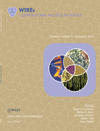
Wiley Interdisciplinary Reviews-Computational Molecular Science
Catalyzing Interdisciplinary Dialogue in Molecular ResearchWiley Interdisciplinary Reviews: Computational Molecular Science is a premier journal published by WILEY, dedicated to the intersection of computational techniques and molecular science. Boasting an impressive impact factor and consistently ranking in the Q1 category across several key disciplines including Biochemistry, Computational Mathematics, Computer Science Applications, Materials Chemistry, and Physical and Theoretical Chemistry, this journal plays a crucial role in disseminating high-quality research that bridges multiple fields. With its focus on providing a platform for interdisciplinary dialogue and innovative computational solutions, it serves as an essential resource for researchers, professionals, and students eager to push the boundaries of molecular science. While the journal does not currently offer open access, it remains a vital conduit for scholarly communication, fostering advancements in understanding molecular interactions through computational methods. The journal is based in the United States, contributing to its global outreach and impact in the scientific community.

JOURNAL OF COMPUTER-AIDED MOLECULAR DESIGN
Elevating Research Standards in Computer-Aided Molecular DesignJOURNAL OF COMPUTER-AIDED MOLECULAR DESIGN, published by Springer, serves as a premier platform for researchers in the fields of computer science applications, drug discovery, and physical and theoretical chemistry. Since its inception in 1987, the journal has played a pivotal role in advancing the methodologies and technologies used in molecular design and screening. With an impressive impact factor and a ranking within the top quartile across related disciplines, this journal offers invaluable insights and innovative approaches that are essential for scholars and practitioners in these dynamic fields. The journal's rigorous peer-review process ensures high-quality publications that contribute significantly to both theoretical and practical advancements. Though it operates under a subscription model, the journal remains dedicated to fostering knowledge dissemination and collaboration among researchers.

Results in Chemistry
Illuminating the Path of Chemical InnovationResults in Chemistry is a prominent journal published by Elsevier, dedicated to fostering innovation and disseminating cutting-edge research in the field of chemistry. With an ISSN of 2211-7156, this open-access journal has been committed to making scientific knowledge widely available since 2019, aligning with the global trend towards accessibility in research. Based in the Netherlands, it features interdisciplinary studies that span the breadth of general chemistry, contributing significantly to the academic dialogue within the scientific community. Despite currently holding a Q3 ranking in the miscellaneous category of chemistry and occupying the 228th position out of 408 in Scopus rankings, the journal is poised for growth, aiming to enhance its impact and visibility. Researchers, professionals, and students alike will find invaluable resources and insights within its pages, making Results in Chemistry an essential platform for those looking to stay abreast of advancements and trends in chemistry research up to the year 2024.

Chem-Bio Informatics Journal
Exploring the Intersection of Informatics and Life SciencesChem-Bio Informatics Journal is a dedicated platform for the dissemination of innovative research in the intersecting realms of biochemistry and computational science. Published by the CHEM-BIO INFORMATICS SOC in Japan, this journal embraces the rapidly evolving field of chemoinformatics and bioinformatics, fostering scholarly communication among researchers, professionals, and students alike. With its ISSN: 1347-6297 and E-ISSN: 1347-0442, the journal continues to enrich the scientific community by offering insights into novel methodologies and applications that bridge chemistry and biology. Although currently positioned in the fourth quartile in the biochemistry category according to Scopus rankings, contributing to this journal provides an invaluable opportunity for authors to showcase impactful findings that could resonate within the field. The journal is particularly committed to supporting interdisciplinary research that addresses complex biological problems through computational modeling and data analysis. By publishing high-quality and peer-reviewed articles, Chem-Bio Informatics Journal aims to enhance the scientific discourse and is poised to become a pivotal resource for advancing the frontiers of biochemistry and molecular biology.
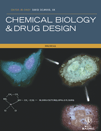
Chemical Biology & Drug Design
Advancing drug discovery through innovative chemical insights.Chemical Biology & Drug Design, an esteemed publication by WILEY, serves as a vital platform for the dissemination of pioneering research in the interdisciplinary fields of biochemistry, drug discovery, molecular medicine, organic chemistry, and pharmacology. With a dedicated commitment to advancing the understanding of chemical interactions and drug development, this journal not only fosters innovation but also bridges the gap between theoretical research and practical applications. It boasts an impressive impact factor and is recognized in the 2023 category quartiles as Q3 in Biochemistry and Molecular Medicine, and Q2 in Drug Discovery, Organic Chemistry, and Pharmacology, indicating its relevance and influence in these crucial areas. The journal’s rankings across various Scopus categories further solidify its position as a reputable resource for researchers, professionals, and students striving to stay at the forefront of medicinal chemistry and drug design. While primarily traditional access-based, the journal's evolving scope from 2006 to 2024 ensures an ongoing contribution to essential scientific dialogue, making it an indispensable read for those committed to advancing health sciences.